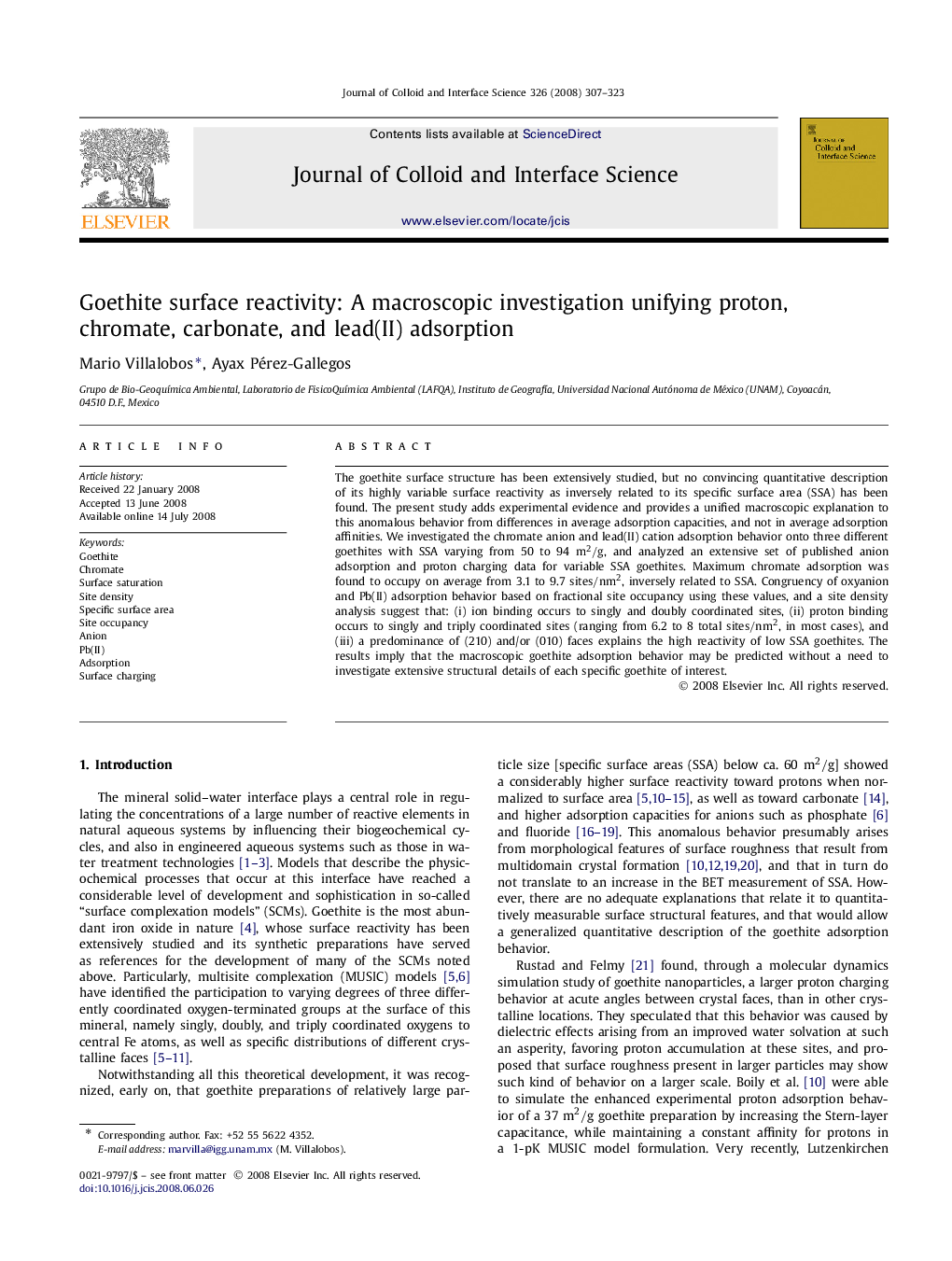| Article ID | Journal | Published Year | Pages | File Type |
|---|---|---|---|---|
| 611318 | Journal of Colloid and Interface Science | 2008 | 17 Pages |
The goethite surface structure has been extensively studied, but no convincing quantitative description of its highly variable surface reactivity as inversely related to its specific surface area (SSA) has been found. The present study adds experimental evidence and provides a unified macroscopic explanation to this anomalous behavior from differences in average adsorption capacities, and not in average adsorption affinities. We investigated the chromate anion and lead(II) cation adsorption behavior onto three different goethites with SSA varying from 50 to 94 m2/g, and analyzed an extensive set of published anion adsorption and proton charging data for variable SSA goethites. Maximum chromate adsorption was found to occupy on average from 3.1 to 9.7 sites/nm2, inversely related to SSA. Congruency of oxyanion and Pb(II) adsorption behavior based on fractional site occupancy using these values, and a site density analysis suggest that: (i) ion binding occurs to singly and doubly coordinated sites, (ii) proton binding occurs to singly and triply coordinated sites (ranging from 6.2 to 8 total sites/nm2, in most cases), and (iii) a predominance of (210) and/or (010) faces explains the high reactivity of low SSA goethites. The results imply that the macroscopic goethite adsorption behavior may be predicted without a need to investigate extensive structural details of each specific goethite of interest.
Graphical abstractAdsorption congruency of site occupancy helped determine reactive site densities of differing specific surface area goethites.Figure optionsDownload full-size imageDownload as PowerPoint slide
